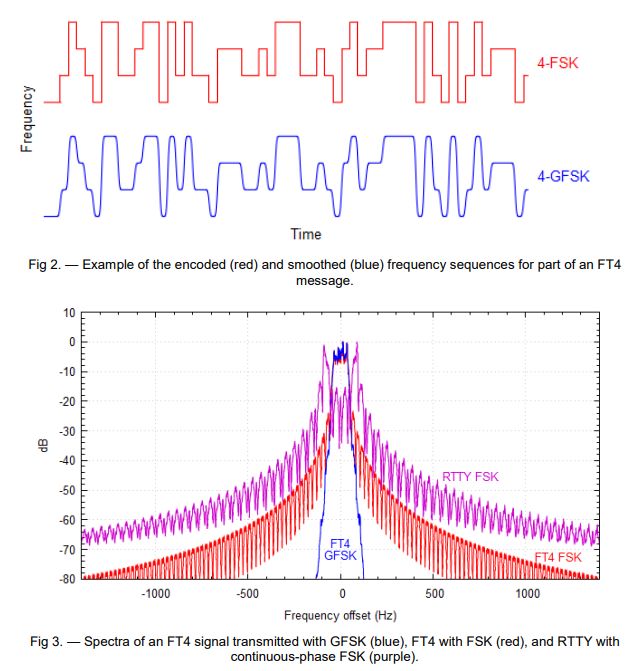I was watching a video of Joe Taylor giving a presentation at the Fair Lawn Amateur Radio Club (Thanks, Bob W1YRC, for that reference). Joe started giving some details of his upcoming FT-4 protocol (starts at 15:35 mark). FT-4 might become a replacement for digital contest work.
What really caught my eye was the importance of bit-shaping to reduce the bandwidth. My club had been pondering a “group build” project that would do something radio related but allow members to get their feet wet with an arduino-like project. One of the ideas was a Morse Code training tool. As these things tend to do, it quickly spiraled out of control with requirements for Farnsworth timing, variable side tone frequencies, printouts for checking, etc.
While it was pretty easy to get a variable frequency side tone generated (essentially a square wave or PWM output), they sounded somewhere between horrible and dying cat bad. The source of the problem is our old friend — sharp edge transitions, which is rich in harmonics. It became clear that some waveform shaping was needed, and the old “raised cosine” technique immediately came to mind. That requirement complicated things considerably. Gaussian Filters were also considered.
Anyway, back to Joe and FT-4. Joe was pointing out that while the standard RTTY signal had two tones spaced 170 Hz apart, and one might assume it was a narrow signal, in fact, due to keying issues, it is actually quite broadband. Strong stations may well wipe out 1 KHz of spectrum space simply because of their bandwidth. He then showed a graph comparing RTTY to FT-4: RTTY taking up 3 KHz to the -60 dB point, while FT-4 taking up less than 200 Hz.
Critical to that reduced bandwidth is the use of a Gaussian Filter to shape the 4-tone FSK signal. In the diagram below, the unfiltered signal is shown on the top in red. The shaped signal is shown in blue. Those are then plotted against a standard RTTY signal (in purple).

The above diagram is from the FT-4 Protocol Document.








